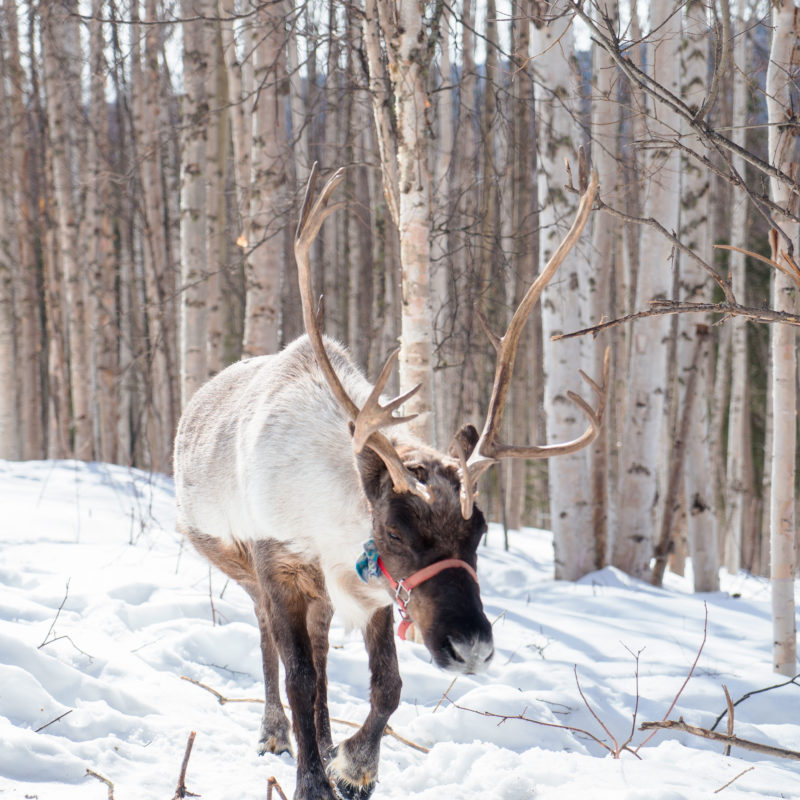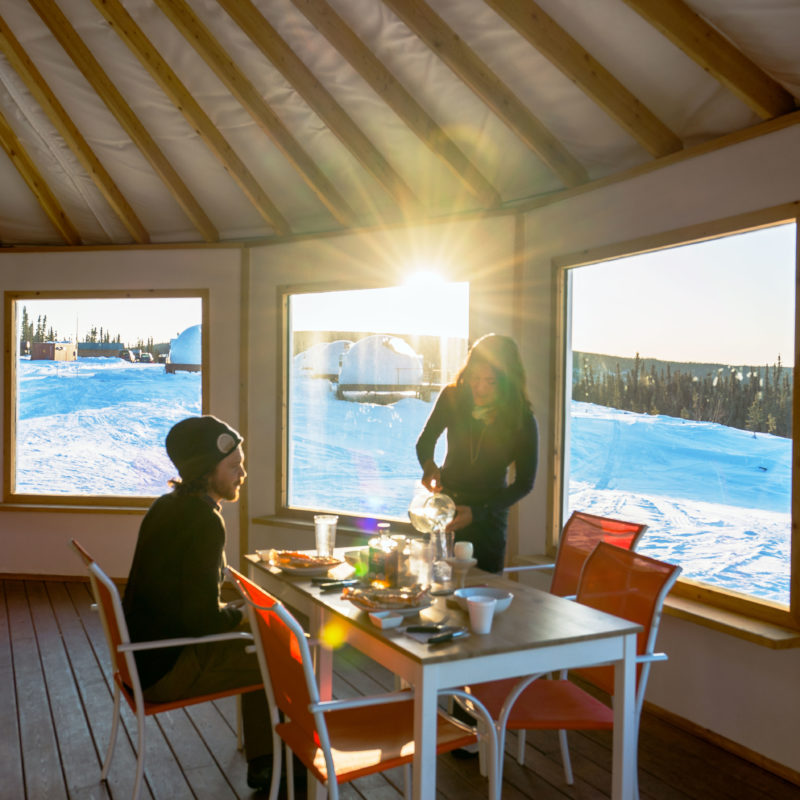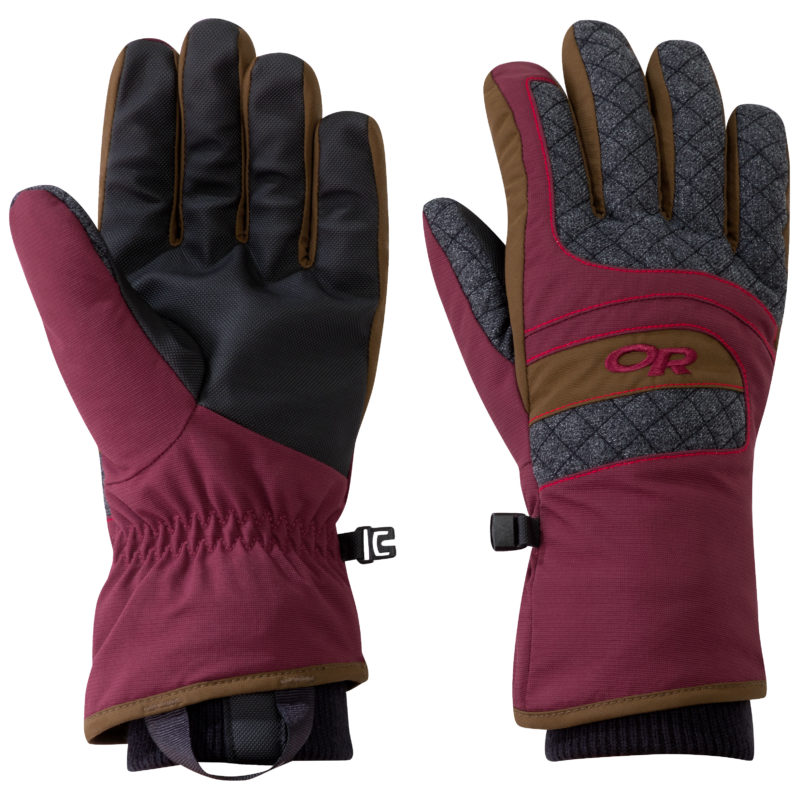
Amazing Aurora Borealis Adventure in Alaska
The cure for the daily grind? An Alaska getaway to meet the aurora borealis and the people who track it

It’s 8 p.m. and still sunny as we drive away from Fairbanks along a bumpy road. The goal is to gain distance on any last remnants of city light by nightfall for the best chance of seeing the aurora borealis—the main reason my boyfriend Mac and I are here, a mere 200 miles south of the Arctic Circle. For the past three years, we’ve been in low-grade survival mode between health issues, several moves, and starting a business. Heading north (way north) for the colorful light show is our attempt to find the fresh air we’ve been craving and rediscover our sense of wonder.
To see the aurora borealis, our host, Adriel Butler, tells us, we’ll need total darkness and clear skies, and Fairbanks has a lot of both—especially from late August to late April. “But at the end of the day, the northern lights are a natural phenomenon. If you try to time it, they’ll misbehave,” he says. Still, that didn’t stop Butler from erecting an entire lodge around them. In November 2018, he opened Borealis Basecamp, a collection of nine and counting off-the-grid domes with barely there architecture and windowed ceilings that offer guests a view of the dancing colors from the bed, similar to what you’d find in Arctic tourist towns in Europe. It’s a tricky feat when you consider that the compound was built 30 miles outside a major city in one of the West’s coldest and most extreme landscapes—and that the area comes with some of the highest energy rates in the country. (A combination of fiberglass used in polar research shelters and clear paneling that’s seven times more thermally efficient than glass ended up doing the trick.)

“I thought, if they can do it in Finland and Iceland, there’s no reason we shouldn’t be able to do it in Alaska,” Butler says before turning off onto Himalaya Road, a narrow, snowed-over strip that doesn’t look like it leads to anywhere in particular. But it does, and upon our arrival at Basecamp I text my mom in Florida a picture. “It looks like Mars,” she replies. And it’s true. The walk across the cratered ridgeline toward the pod where we’ll sleep over the next few nights has a space-colony vibe, the sky so intensely blue it’s almost otherworldly.
Life on Mars turns out to be pretty cushy. The domes are spacious enough to fit a couple of beds, a kitchenette, a space heater, and a full bathroom with a hot shower—an obvious necessity. The temperature inside reads 77°; outdoors in November it regularly drops to –6.

“Think you’re going to make it out there?” asks Mac with a teasing glance. Growing up in Miami, I was raised to believe a chill in the wind equals pneumonia. When we moved to Colorado, Mac gave me a personal space heater that remains glued to my side half the year.

“It’s time to go,” Mac says, as he stuffs handfuls of hand and toe warmers in the pockets of his parka. We’re scheduled for an aurora photography class at 8:30, so under a muted daylight we amble 15 minutes up the same two-lane road we drove in on and up to the cabin of Frank and Miriam Stelges.
The couple, a pair of German transplants, greets us with a warmth that seems counterintuitive to reclusive living but which makes sense when you consider that people have to rely on each other up here just to get through the winter. Their driveway is filled with evidence of life at the 65th parallel: a Ski-Doo snowmobile, an ATV, a heating-oil tank. Inside, the cabin checks all the boxes of Scandinavian hygge. A gliding patio door in the pine-clad, lofted living room looks out over 147 acres of tumbling white terrain. The windows filter in a periwinkle tint, and I help myself to a spot on the couch, across from the wood-burning stove.
In addition to more basic group workshops that cater to tourists hoping to capture a heavenly spectacle, the Stelgeses also host private classes like this for an evening of aurora photo lessons, Mediterranean tapas, bottomless wine, and conversation. “I used to travel the world and meet all these interesting people,” says our instructor, Frank, over a table set with dishes of bacon-wrapped dates, caprese salad, and crusty breads. “Now the world comes to us.”
He starts with a 20-minute aurora presentation to help explain the science behind nature’s trippy light show. Oversimplified, the mechanics go something like this: When fast-moving, magnetic solar material strikes Earth’s magnetic bubble, a geomagnetic storm results, sending trapped charged particles down toward our atmosphere, where they collide brilliantly with molecules in the air. “For many people, it’s a spiritual experience,” Frank says.
Call it awe, wonder, or amazement—the northern lights have been known to produce plenty of it. So, too, can any event that confronts us with something larger than ourselves—the birth of a child, the summit of a fourteener, natural phenomena such as a total solar eclipse. The feeling of awe, wrote a pair of researchers from the University of California, Berkeley, and University of Virginia in a landmark 2003 paper, promotes altruism and well-being: “Fleeting and rare, experiences of awe can change the course of a life in profound and permanent ways.” But right now, as the last bits of sun cling to the horizon and Miriam floats through the room lighting candles, all I feel is cozy and sleepy. It doesn’t help that one of the Stelgeses’ dogs, a rescue named Dippy, curls up behind me on the couch. So I walk outside to summon stamina. Frank follows.
“Are those the northern lights?” I joke, pointing at a cloudy blob above. He pauses for a moment, contemplating the sky. “Oh,” he responds. “Yeah, that’s it.”
The blob seems to get brighter in response to my insolence. I run inside to rally Mac and pile on layers. By now, the blob is noticeably brighter and has more streaks, though not quite like the examples we saw in Frank’s presentation. Following him through a clearing in the woods, we come to a mound that puts us just above a wall of black spruce. We stand below the twilight, watching the glowing haze overcome what’s left of a peachy sun. For a moment Mac and I are stock-still as our minds fail to place the splendor in a familiar box. “This isn’t common,” Frank says. “You don’t typically get the sunset and the aurora at the same time.”

I imagine what the Alaska Natives might have thought about these electric apparitions. Some of the lore is quite tame: The Iñupiaq thought they were the souls of ancestors. A more sinister tale warns children that the lights might snatch your head for a game of cosmic kickball.
“Steph, look at this!” Mac says, his face aglow. After some camera-setting adjustments and guidance from Frank, the digital photos reveal a fierce intensity that better resembles the brochures and postcards we saw plastered all over Fairbanks than the more muted display I see above. Mac’s elated. I’m feeling a little duped.
“So, does it never really look the way it does in the pictures?” I ask Frank, considering the brilliant array of green, yellow, and magenta eddies we had been primed to anticipate.
“Well, what’s real?” Frank asks. “What your eyes can perceive or what the camera picks up?” Touché.
To be clear, the naked eye can see spectacular auroras in all sorts of colors and configurations: dancing, shooting, swirling. The hue you see depends on which atmospheric elements are interacting with charged particles at that moment. Tonight, it’s green, which tells me oxygen is probably at play.
At 23°, it’s not nearly as cold as it could be, but my Florida-trained blood doesn’t know the difference. Dampness sneaks into my socks, and my toes begin to go numb. And suddenly, I’m looking forward to our heated dome.
Back at camp, Mac sets up shop on our pod’s deck, stoked to continue honing his night photography skills, while I crawl under the covers where I can admire the display in blissed warmth. A few hours later, I wake to find Mac asleep and the lights raining directly above us. I consider waking him, but he looks so peaceful. I lay there thinking of everything and nothing, feeling comfortably small in the world.
By the time we roll into the communal yurt for breakfast, the staff has already laid out coffee. It’s a beautiful morning, the sun beating down on skinny trees that are sweating off the overnight frost. For a trip that’s all about what you see and experience at night, we hadn’t considered how to fill 13 hours of daylight.

On cue, adventure guide Bryce Dominguez bounces in with a trove of winter gear. “Alright, we have some options for you guys,” he says, handing me a pair of waterproof snow boots and rattling off a short list of activities.
We go with a dogsledding and snowshoeing combo. Our guide is Iditarod musher Dave Turner, whose grand entrance takes him down Suicide Hill, a sharp incline dubbed for its dicey history with local daredevils. After a quick introduction to his team of eight sled dogs, I awkwardly squat on the runners and dash through the snow. The trim canines are in turbo mode with paws in sync and tongues out while I death-grip the handlebar. At some point I stop pretending I’m in control, and when we squeeze through narrow trails lined with stunted spruce, I feel pure joy. This is the most snow I’ve ever seen.

We mush on toward a massive lake hiding under powder. It’s our turnaround point, but first, we’ll snowshoe. Mac forces his boots into place, and after a few stomps manages to plummet waist-deep into the snow. Neither one of us can seem to stay upright; with every attempt we make to swagger out of the trenches, we laugh harder until we’re crying. Never before had I noticed that my Alabama boy is just as bad at winter as I am.
Back at Basecamp, we’re the good kind of tired, not to mention hungry for the reindeer soup, monster Alaska king crab, and steamed veggies waiting for us in the yurt. Someone breaks out a bottle of whiskey to toast the day. Later, after a quick post-dinner nap, we huddle onto the deck of a dome that’s been set up as a lounge and await the northern lights, which once again come streaking in before the sun has a chance to fully bow out. An electric green swirl shoots straight down as if taunting the bristly trees below. From our spot, the apparition looks bright and close, at once mythical and awesomely, unbelievably real.
The wind picks up, so we retreat to our bubble. It’s only midnight and, judging by the way things are going, we know to expect a rainbow of colors in the early morning hours, prime time for viewing auroras. Lying supine on our twin beds pushed together, we gaze up, marveling at the distinct sensation of being suspended inside the aurora itself. This goes on for as long as our tired bodies can muster—until eventually we drift off into sleep, our faces turned toward the light.
Three Ways to Sleep with the Lights On
Budget-friendly resort: At Pike’s Waterfront Lodge, a two-minute drive from Fairbanks International Airport, you can crash in a cabin or suite after a night of aurora hunting and not miss your flight in the morning. Wander the hotel’s hallways, where you’ll find Rusty Heurlin dreamscapes capturing Native Alaskan heritage and Last Frontier scenes by Harvey Goodale, as well as some modern paintings by living artists like Randall Compton. The collection is on a par with the art you’d find at the reputed University of Alaska Museum of the North nearby. From $95; pikeslodge.com.
Bed and breakfast: Aurora huntings can go on until the wee hours, so you’ll want to recharge somewhere cozy like Alaskan Viewpoint Lodge, where you’ll eventually rise to the smell of a home-cooked breakfast like caramel French toast with wild berries. One room comes with a jet bathtub, and all include access to a plug-in to keep your car engine from freezing. (Trust us, this is key.) From $130; alaskanviewpoint.com.

Full immersion: This year, Borealis Basecamp added a full-service restaurant; saunas and another six futuristic-looking domes are in the works to accommodate up to 30 people. It’s planted on 70 acres of boreal forest, so you are “roughing” it in some respects (there’s a dry toilet in each room that’s soon to be converted to a standard flush toilet), but it’s worth it to essentially be sleeping in an observatory. From $389 (2-night min.); borealisbasecamp.net.
Snow Pack
Fairbanks tends to get mighty cold: By late November, average daily lows dive past 0° and highs barely creep into the teens. Bundle up with the right gear so you can chase the northern lights in comfort. —Maya Wong

Arc’teryx Crest Toque : The wool blend and snug fit keep the heat in. But the genius is in its reversible design. $39; arcteryx.com.

Patagonia Fitz Roy Down Parka: Super light—and extra warm—with 800-fill goose down and a longer cut to cover your backside. $449; patagonia.com.

Outdoor Research Riot Gloves: A fleece lining adds another level of cozy to this waterproof pair. $55; outdoorresearch.com.

Columbia Titanium Omni-Heat 3d Knit Tight: A stretchy base layer made with fabric meant to reflect body heat back to legs also wicks away sweat. $90; columbia.com.

Sorel Youth Whitney Suede Boot: Good traction (watch for black ice!) and suede that stands up to the wet. $105; sorel.com.
